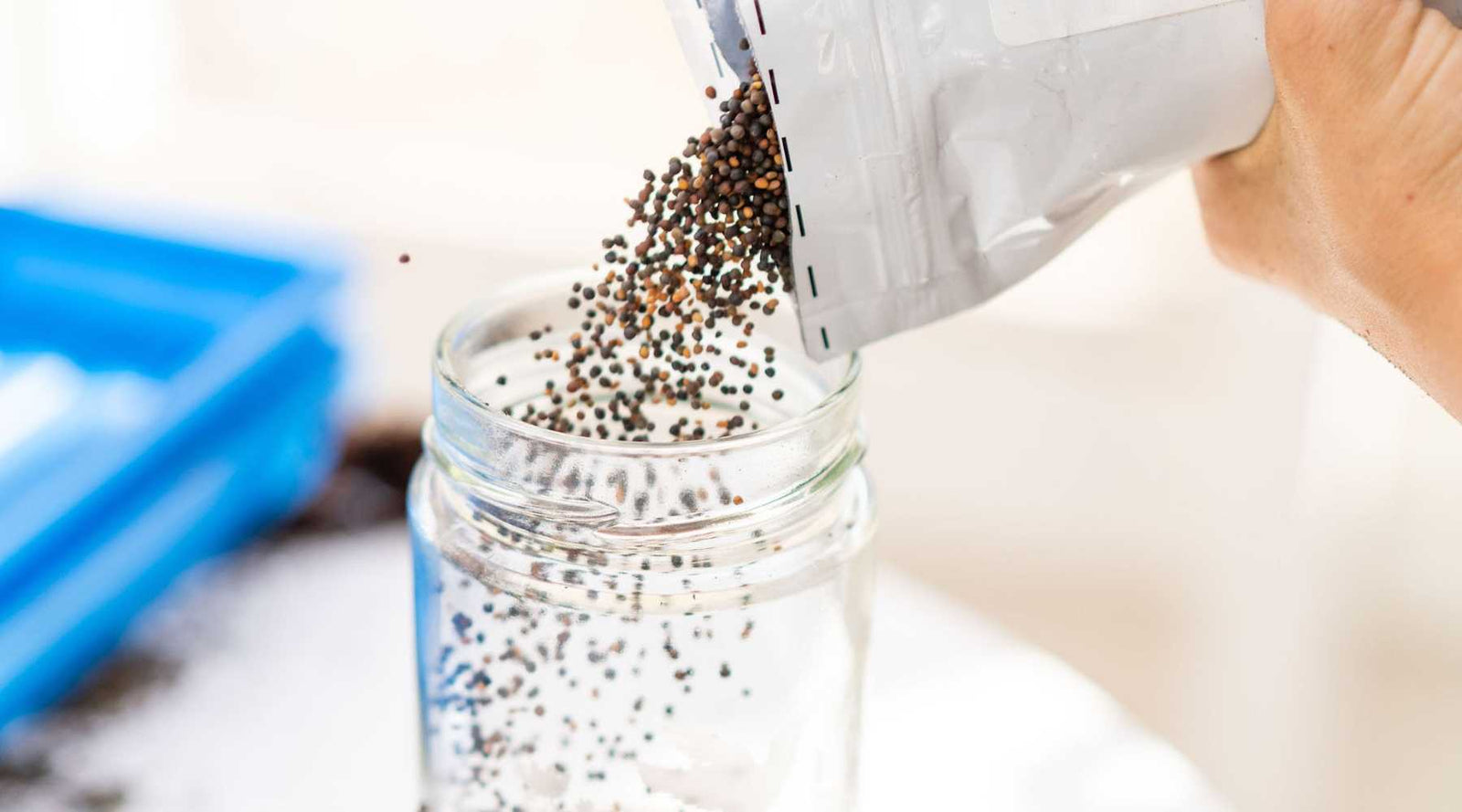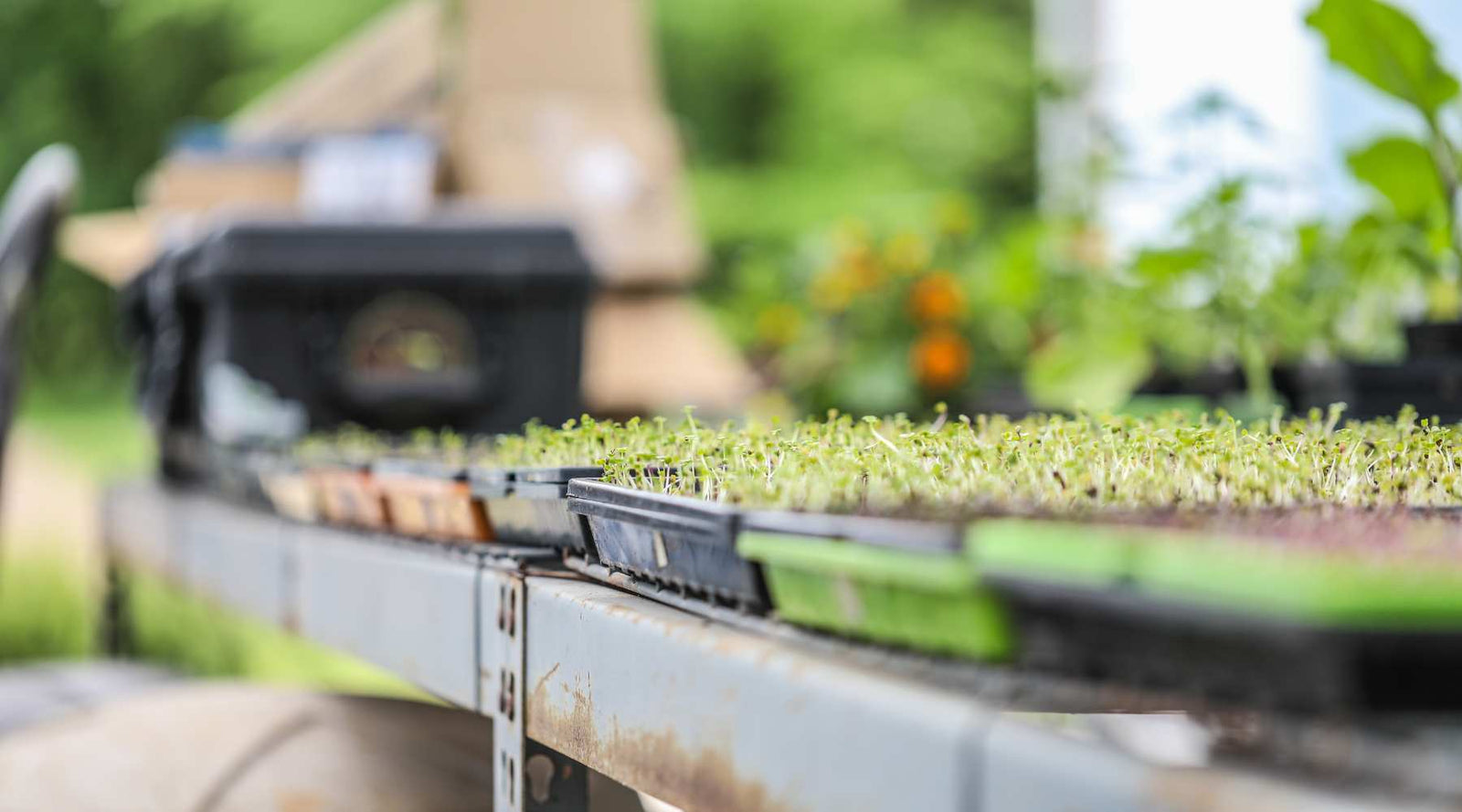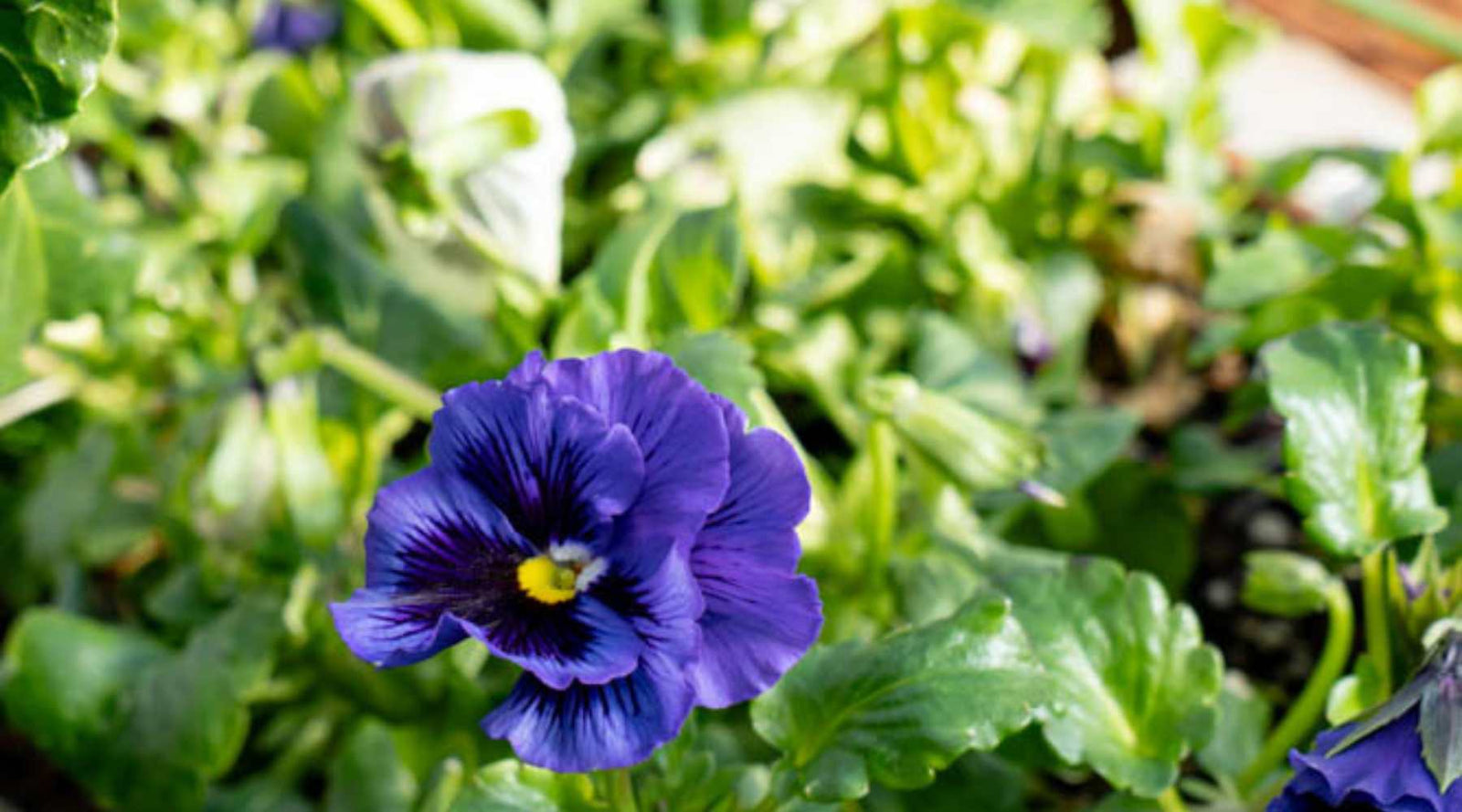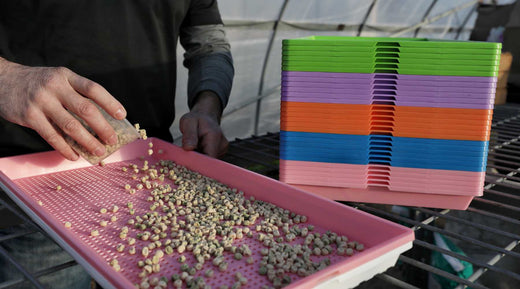Free Shipping on Orders over $75 to the Contiguous US
Free Shipping on Orders over $75 to the Contiguous US
How to Disinfect Seeds Before Planting and Sprouting
July 27, 2025 8 min read 0 Comments

How to Safely Disinfect Seeds Before Planting or Sprouting
There are a few different and effective ways to disinfect seeds. The three most commonly recommended and effective treatments for sanitizing seeds are hydrogen peroxide, calcium hypochlorite or vinegar. The best method for you to use will often depend on the planned end use of your seeds.
It is important to note that no method results in complete exclusion of pathogens but all will reduce them significantly. This is because seed coats are rough at the microscopic level and the little nooks and crannies can hide bacteria or fungal spores.
It is your responsibility to ensure that whichever method you select uses food grade ingredients. This is why many small scale home growers choose to use vinegar. All of these methods use chemicals which have the potential to be dangerous if handled incorrectly. Always wear gloves and eye protection and whatever additional personal protective equipment recommended in the product labeling when handling potentially harmful chemicals.
Seeds used for growing sprouts are the most likely to cause foodborne illness and, therefore, the most important to disinfect. Seeds intended to be planted in soil or directly in the garden, if purchased from a reputable seed supplier, are minimal risk and not necessarily essential to disinfect. Seeds used for microgreens or started in indoor growing spaces fall in the middle. Not all microgreen seeds need to be disinfected, except those known as the “dirty” varieties.
Here at Bootstrap Farmer we get a lot of questions about sanitizing growing spaces and seeds as well as questions about mold growth in growing spaces. Below we have answered the questions we see most often. If some of these terms are new to you there is a glossary at the end of this article.

Why do seeds need to be disinfected?
Seeds can have a wide variety of pathogens present, from bacteria like E. coli and salmonella to fungal spores that cause mold to form on the soil or seedling. The warm and humid environment that most seeds germinate in is also the perfect environment for the growth of these pathogens.
Seeds purchased from suppliers that cater specifically to the sprouting market should be certified pathogen free. If in doubt, you can ask your supplier for the certification. Having good sanitizing procedures is an integral part of indoor growing to prevent these pathogens' unintentional propagation and growth.
Do all seeds need to be disinfected?
No, not all seeds need to be disinfected. Seeds that will be planted in soil or directly in the garden are usually fine to use as is right from the packet. This is because the soil contains beneficial bacteria and microorganisms that compete with pathogenic organisms and allow the seed to develop naturally. In addition, since these plants will be grown to a mature size before consuming they have plenty of time to develop a healthy microbiome that is beneficial instead of pathogenic.
Do I need to sanitize seeds before planting them in my garden?
In most cases it is not necessary to sanitize seeds for planting. If you are significantly concerned about seed borne pathogens including fungal spores or bacterial contaminants, you can use any of the seed treatments listed in this article for help.
What kinds of seeds should be sanitized before planting or sprouting?
Seeds that are known to be contaminated, seeds used for growing sprouts, and many seeds used for microgreens should be sanitized before planting. If you will be growing sprouts at home we strongly recommend using one of the methods below or referring to this publication from the University of California at Davis, Growing Seed Sprouts at Home as it is the most commonly cited study on the sanitation of seeds for sprouting.

Do microgreen seeds need to be disinfected?
Not all microgreen seeds need to be disinfected. Any variety that will be pre soaked before planting is much more susceptible to problems with plant pathogens and should be sanitized.
We recommend you sanitize varieties that are more prone to carrying mold and pathogens AND those that benefit from a presoak to help propel germination even if you are not soaking. Just be sure to do a thorough rinse before and after the soak.
For added protection you can sterilize seeds before and after the suggested soaking times or just after.
Microgreen seeds that often are pre-soaked:
- Cilantro
- Sunflower seeds
- Peas
- Beets
- Swiss Chard
- Nasturtium
- Beans
- Popcorn
How do you disinfect seeds before planting?
The three best methods for disinfecting seeds are explained in depth below. Each grower should experiment and choose the method that works best for their space and ability. Vinegar and hydrogen peroxide are popular with growers looking for less chemical dependent methods.
Calcium hypochlorite is the best “bleach” to use for seeds. Regular household bleach (sodium hypochlorite) solutions can be used for sterilizing equipment but should not be used on seeds for sprouting or microgreens.
For more information on cleaning your seed starting equipment, check out How to Wash and Care for Seedling Trays.
How to use hydrogen peroxide to sterilize seeds?
Food-grade hydrogen peroxide purchased in concentrated form must be diluted before use. We recommend diluting to a 3% concentration. Since most concentrates are 33% H2O2, this is simple to do by using a ratio of just over 10 parts water to 1 part concentrate.
The beginning of the sterilization process is the same regardless of intended use. Seeds for microgreens can be disinfected before or after suggested soak time.
To disinfect seeds with hydrogen peroxide:
- Rinse the seeds thoroughly in a strainer.
- Place seeds in a clean non-reactive container.
- Cover with 3% hydrogen peroxide solution to around an inch above the seeds.
- Soak for 3-5 minutes, stir seeds once a minute to ensure even treatment.
- Drain seeds and rinse thoroughly in running water. (h2o2 cannot be reused)
- Soak or plant seeds as desired.
For more on Microgreens & Soaking Seeds check out this article. For regular planting or sprouting follow instructions as you normally would.

How long can you soak seeds in hydrogen peroxide?
Seeds should be soaked for no more than 5 minutes. After soaking seeds should be rinsed well in cool running water to remove any residual solution. Soaking times extended beyond 5 minutes can cause issues.
Does hydrogen peroxide damage seeds?
When used properly hydrogen peroxide will not damage your seeds. Hydrogen peroxide should be used at a 3% or lower solution. If you are using a stable hydrogen peroxide solution like ZeroTol 2.0 ensure you are following all label instructions for diluting before use.
Soaking seeds beyond 5 minutes can cause air pockets to form between the seed and the seed coat. This can cause uneven germination as water will be trapped on the seed coat and away from the seed itself. Solutions of hydrogen peroxide over 3% can also cause issues by damaging the seed or its coat.
How do you disinfect seeds with vinegar?
Store bought vinegar, which has an average acidity around 5% can easily be used to disinfect seeds. This method works well for home growers but can be cost prohibitive on a large scale since the vinegar can be costly.
To disinfect seeds with vinegar:
- Rinse the seeds in cold running water.
- Place seeds in a clean, non-reactive container.
- Cover with vinegar to 1 inch above the level of the seeds.
- Soak seeds for 15 minutes stirring occasionally.
- Rinse seeds until all vinegar smell is gone.
How to disinfect seeds with Calcium Hypochlorite
Calcium hypochlorite in a 2% solution (20,000ppm) is the recommended way to sanitize large amounts of seeds. Ensure that the calcium hypochlorite you purchase is food grade. Household bleach is not food grade and is usually sodium hypochlorite.
This method is best suited for larger operations because it does require storage and mixing of chemicals on a larger scale, as well as agitation of the solution. This document from North Carolina State University gives good instructions on properly mixing solutions, while it is geared towards post harvest handling of fruits and vegetables, the principles work for seed sanitizing as well, Choosing and Using a Chlorine-Based Disinfectant.
Once you have your properly mixed solution the process of sanitizing is remarkably similar to that used with vinegar. These instructions are based on research from the University of Arkansas.
To disinfect seeds with chlorine-based disinfectants:
- Place seeds in a mesh bag.
- Rinse the seeds in cold running water.
- Use a clean, non-reactive container to fill with food grade calcium hypochlorite solution.
- Soak seeds for 15 minutes while agitating the bag in the solution.
- Rinse seeds until all chlorine smell is gone.
Why do I have mold in my grow room for the first time?
Every year as the weather warms up, we get questions from new growers who are experiencing mold and pest issues for the first time. When outdoor temps raise the average temperature in an indoor growing space above 70-75℉, it can stimulate mold growth even if you have changed nothing else in your growing process. The best solution to this is installing proper temperature and humidity control as well as preventative sanitizing of seeds and trays.
Pests like fungus gnats are also stimulated by warmer weather. Again prevention is the best solution. These insidious little bugs can hitch a ride on clothing, soil, or nursery plants. They are also culprits of spreading fungal infections. Sticky traps are good for catching flying adults, and good grow room hygiene helps prevent the spread of eggs and larvae.

How do I prevent mold growth on my seedlings and microgreens?
We get this question more than almost any other once the warmer weather of summer sets in. Those of us at Bootstrap Farmer who grow microgreens like to use a simple process for sanitizing our plantings even when they are not the notoriously “dirty seeds” mentioned above. Whether you are using pre soaked and disinfected seeds or dry seeds the method below is great for preventing mold growth before it can gain a foothold in your space. Good air flow and grow room hygiene are still important and need to be maintained in order to keep growing issues at bay.
For a clean start to growing any type of microgreen grow:
- Fill trays with moist growing media
- Thoroughly mist the surface with a 3% hydrogen peroxide solution
- Evenly distribute your premeasured seeds
- Mist the seeds with your 3% hydrogen peroxide solution
- Wait 2-5 minutes
- Thoroughly wet the seeds and growing media with clean water and stack
This helps to encourage an aerobic microbiome for your seeds to grow in. Since almost all pathogenic issues thrive in anaerobic environments it gives your seeds and soil a great start to grow from.
Glossary
Pathogen - any organism or agent that can cause disease.
Microbiome - the complex interaction of the billions of microbial organisms found within a particular environment. A healthy microbiome creates an environment where plants thrive and can fight off pathogens and lead to better plant health.
Fungal spore - these are tiny particles that make it possible for fungi to reproduce. Essentially the “seed” in the fungi world.
H202 Solution - A diluted solution of food-grade peroxide and filtered water often used for sanitizing seeds and equipment in grow rooms.
Non-reactive container - a jar, bowl, or bucket, usually made of glass or food grade plastic.
Resources
Information from the U.S. Food and Drug Administration for commercial sprouters: http://www.foodsafety.gov/~dms/fs-toc.html#prod
Information from the U.S. Food and Drug Administration for consumers: https://www.fda.gov/food/cfsan-constituent-updates/fda-concludes-major-sampling-study-sprouts
This publication from the University of California at Davis, Growing Seed Sprouts at Home is the most commonly cited study on the sanitation of seeds for sprouting.
Also in Microgreens Guides & Resources

How to Market Microgreens: Strategies That Get Results
March 27, 2025 13 min read 0 Comments
In this article, we’ll help you stay at the top of your microgreen game to help you succeed in this exciting venture.

Must-Know Tips for Edible Flower Farming Success
October 20, 2025 9 min read 0 Comments
Learn how to expand your markets, what popular edible flowers to offer, marketing tips, new trends, and best practices.

What Lights Do I Need to Grow Microgreens?
January 13, 2025 10 min read 0 Comments
Recent Articles
- How to Market Microgreens: Strategies That Get Results
- Must-Know Tips for Edible Flower Farming Success
- What Lights Do I Need to Grow Microgreens?
- How To Grow Microgreens Indoors - SEED to HARVEST
- A Quick Guide to Starting a Microgreens Business
- How and When to Use 10x10 Microgreen Trays to Grow Nutrient-Packed Greens
- How to Disinfect Seeds Before Planting and Sprouting
- Top 5 Best Growing Mediums for Microgreens
- What Trays Do You Need for Microgreens and Propagation?
- Top Ten Microgreens to Grow
Subscribe
Sign up to get the latest on sales, new releases and more …
